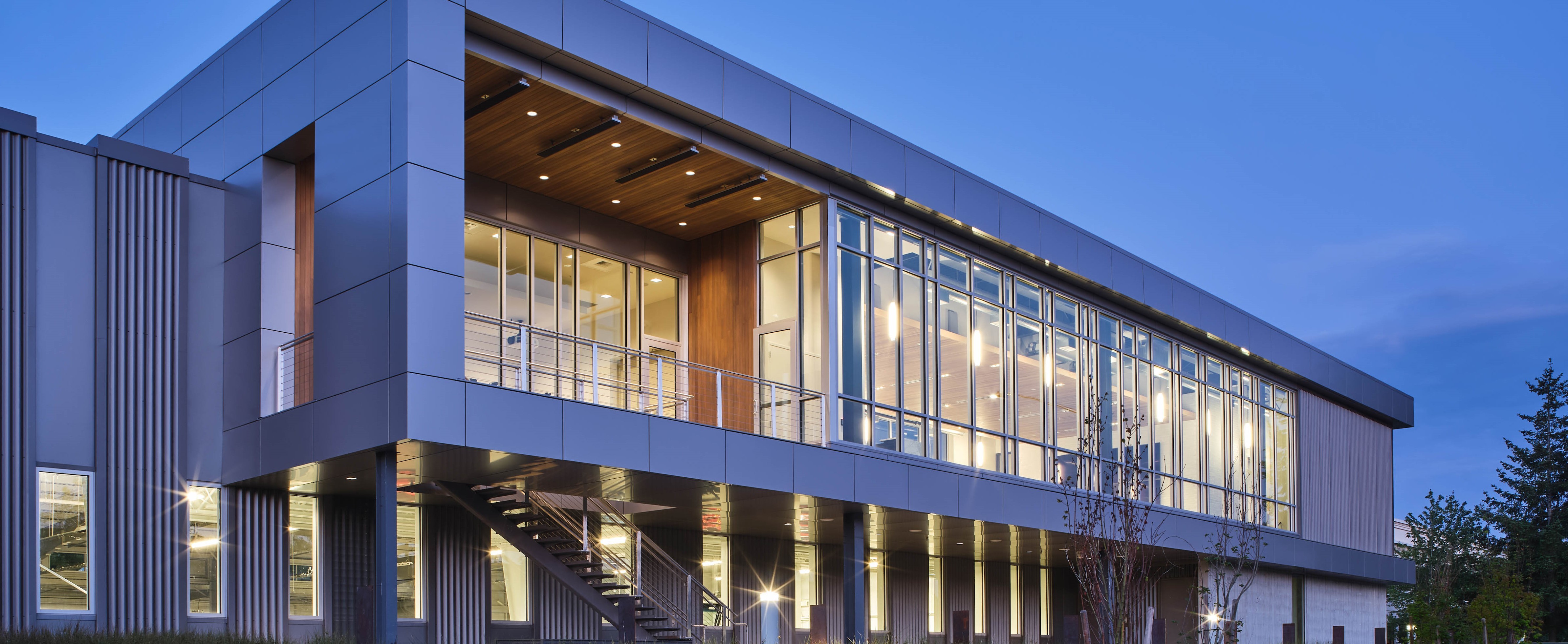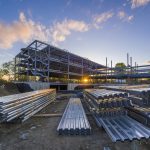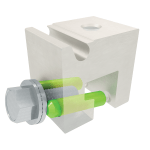In December the construction industry rounded out another year of growth, and after 10 years of expansion, everyone in the industry is breathing easier. The collective memory of the dire times is still strong and, while there is no direct evidence, the indicators our annual surveys throughout that period have shown that contractors remain conservative in their growth goals. No one is getting out over his ski tips.
Entering a new decade, contractors reflect on 10 years of growth and anticipate an uncertain future

Part of that may be attributed the shortage of skilled labor, which has acted like an ice cube in heated water—it hasn’t kept it from getting hotter, but it has slowed the temperature rise. To some extent, the conservative approach is a little surprising. There are now mature companies in the construction industry that have never experienced a downturn. For the owners of those businesses, the lessons of the past may not be as fresh.
The Dodge Data & Analytics annual construction outlook showed a 1% decline in construction starts for 2019 compared to 2018, which isn’t significant. But the report predicts a 4% decline in 2020 construction starts, which indicates the beginning of a decline. That includes both commercial and residential construction, and the commercial market is expected to take the bigger hit with commercial building starts dropping 10%.
Our survey shows a similar concern in the metal construction industry. While respondents report increases in square footage built for metal buildings, metal wall panels and light-gauge framing, they also saw a 3.9% decline in metal roofing. It’s hard to determine why from the numbers available, but one possibility is that metal roofing is the one sector that most heavily involves residential construction, and contractors working in that market are just less robust in their predictions.
Interestingly, the National Association of Home Builders (NAHB) predicts 2% growth in total housing starts to a total of 1.3 million units. That will put the market back to the level it was in 2007 before the housing recession, but below its historic norms. Of that, single-family starts will comprise 920,000 units, which is a 3% increase, and multifamily starts will hit 383,000 units. Looking at the demographics of the housing market, the industry should be delivering between 1 and 1.1 million single-family units to meet demand, according to NAHB, but much of the shortfall can be attributed to young people entering the housing market more slowly.
The Remodeling Futures Program at the Joint Center for Housing Studies of Harvard University publishes an annual Leading Indicator of Remodeling Activity (LIRA). Historically, the remodeling industry has grown at about 5% annually, but the LIRA report for 2020 shows a modest 2% growth. That will edge the total market above $330 billion in 2020.

Average Square Footage Increase by Metal Building Product
General Statistics
In 2019, the respondents to our annual survey reported much higher total sales than has been the norm for this survey, making that group of a bit of an outlier. In the 2020 Contractor Survey, respondents more closely match previous years, reporting annual contracting sales volume of $5,061,02, which is nearly $3 million less than last year’s survey takers.
The total average metal project sales volume reported by this year’s respondents still closely matched last years. That means that although the companies reporting this year were overall smaller than last year, they did a much higher percentage of their work in the metal construction industry.
About 40% of the companies responding identified as general contractors with the second highest reporting group as metal building contractors, who represent 13.2% of all survey takers. Compared to last year, the breakdown of participants was roughly the same with one exception. In 2020, we had more metal erectors reporting than in previous years. This could partially explain why total sales volume was down, but metal construction sales volume stayed roughly the same. Metal erectors, unlike roofers and general contractors, are unlikely to do many projects outside their niche.
Every year, we see about the same representation of types of contract companies work under. Most are design-build at nearly 50% and the others are 30% new spec work and 22.4% retrofit/remodel. The work on existing buildings is slightly higher than in previous years. Regionally, there was only true outlier. Companies from the South were much more likely to do retrofit/remodel work (35.7%) than other regions, which all reported by 20% of their work in that area.
(Percentages may not add up to 100 percent due to rounding.)

Company Location

Type of Firm

Average Annual Gross Contracting Sales Volume

Average Metal Project Sales Volume

Breakdowns of Metal Construction Contracts

Amount of Metal Construction Projects Involving Architects
Metal Buildings
Even though metal erectors represented a much higher percentage of overall respondents in this year’s survey, survey takers in 2020 were less likely to be involved in metal building construction. Overall, 53.6% say they participated in such projects, compared to nearly 70% last year. The change can be directly attributed to the respondents from the South. In previous years, this region was much more likely to do metal building construction, but this year they were less than other regions.
The average square footage of metal buildings completed in 2019 nationally was 26,082 square feet, which was a 13.2% increase over 2018. Every region reported an increase from 2018 to 2019, but the contractors working in the West reported the smallest increase and really just maintained the same level. The largest increase came from those companies working in the South at 19.5%.
Companies were mostly likely to have been involved in commercial projects (80.3%) and least likely to be involved in cold-storage projects (18%). The breakdowns in project types constructed were roughly equivalent no matter what region a company operated in. And the size of the buildings that companies worked on held the same from 2019 respondents. About 30% did projects larger than 80,000 square feet, but nearly all companies did projects smaller than 10,000 square feet.

Number of Respondents Involved in Metal Building Construction

Average Number of Metal Buildings Completed per Those Involved

Average Square Footage of Metal Buildings Completed

Percentage of Contractors Involved in Metal Building Project Types in 2017

Metal Building Projects Completed, According to Building Size
Metal Roofing
The survey takers who said there involved in metal roofing projects in 2019 (about 35%) declined from last year’s respondents (about 44%). They did report a slight increase in the metal roofing projects they undertook in 2019, up 4.6%, but the same group anticipates doing roughly the same number of metal roofing projects in 2020.
Fifty-five percent of respondents said they undertook fewer than 10 metal roofing projects in 2019. About 20% did more than 50 projects in the same time frame. That continues a trend that this survey has seen over the years with a greater percentage of companies taking on more than 50 projects. Usually, survey takers are more likely to do fewer metal roofing projects, but this year an inordinately high number were large companies taking on lots of projects. That could indicate more of them were residential companies who, as a matter of business course, do more projects in a year.
That conclusion is borne out when looking at the types of projects completed in 2019. Nearly 75% of companies did commercial metal roofing projects, which follows similar trends from previous years, but this year we saw an uptick in the number of companies landing residential work with 32.6% of respondents saying they worked on houses.
Our respondents report good increases in the sizes from 2018 to 2019. Nationally, average square footage of a metal roofing project was 24,310 square feet in 2018 and 26,841 square feet in 2019, which is a 10.4% increase. Across regions, respondents reported increases from 2018 to 2019 but it was more likely to come in the East and South than the Midwest and West.
Companies doing metal roofs on non-metal buildings ran about 26% nationally in 2019, which was a jump from 19.7% in 2018. Similar increases occurred across region, but the average size of the projects completed dropped in 2019 to 21,812, a decline of 3.9% nationally.

Number of Respondents Involved in Metal Roofing Construction

Average Number of Metal Roofs Completed per Those Involved

Average Square Footage of Metal Roof Projects Completed

Percentage of Contractors Involved in Metal Roofing Types

Percentage of New Metal Roofing on Non-metal Buildings

Average Square Footage of New Metal Roofs on Non-metal Buildings
Metal Wall Panels
Respondents who said they participated in metal panel projects in the previous year was considerably less than survey takers in last year’s survey. In the 2019 survey, 45.6% of respondents said they had done a metal wall panel project in the previous year. In this year’s survey, only 30.3% claim they did metal panel work. More importantly, this group said it will do approximately the same amount of work next year as it did year, indicated a steady market. Those responses were pretty consistent across regions, although the South did report a much lower percentage (24.2%) working in metal wall panels last year.
About 72% of respondents did fewer than 10 projects in 2019, which is comparable to last year’s respondents. Far and away, the greatest number of contractors involved in metal wall panel projects did fewer than four projects, with 45.1% saying they did that amount.
Those projects fell into the commercial building category more than they did any other category (73.7%) with industrial projects coming in distant second at 53.3%. These respondents follow closely the pattern set last year, including just under 25% doing residential projects that include metal wall panels.
The average project size for our respondents was 22,983 square feet in 2019. That was a 5.5% increase over the previous year. Companies working in the West tended to work on smaller projects, 17,086 square feet and the same group reported a decline in square footage from 2018 to 2019 at 6%.

Number of Respondents Involved in Metal Wall Panel Construction

Average Number of Metal Wall Panel Projects Completed per Those Involved

Average Square Footage of Metal Wall Panels Construction

Percentage of Contractors Involved in Metal Wall Panel Construction Types
Light-gauge Steel Framing
Only 19.3% of respondents anticipate working on light-gauge exterior framing projects in 2020, and that number is even less (18.5%) for light-gauge interior framing projects. Very few companies did more than 50 exterior projects last year’s survey. And in this year’s survey no respondents reported doing more than 50 exterior projects in 2019, but 5% anticipate crossing that threshold in 2020. Looking at interior light-gauge framing, 11.8% did more than 50 last year, and more than 15.8% will do more than 50 in 2020. That shows good growth, and it also indicates that companies doing interior framing projects tend to be larger than those doing exterior projects.
The average square footage of exterior projects held constant from the previous year’s survey. Interior projects, though, tended to be larger among the survey takers this year. Both interior and exterior projects should grow between 7 and 8% in 2020. Variables across regions probably include too few respondents to be completely reliable.
We can conclude, though, that larger companies are growing and that they square footage of the projects being completed is increasing as well.

Number of Respondents Involved in Light-gauge Exterior Framing

Average Number of Light-gauge Exterior Framing Projects Completed per Those Involved

Average Square Footage of Light-gauge Exterior Framing Projects

Number of Respondents Involved in Light-gauge Interior Framing

Average Number of Light-gauge Interior Framing Projects Completed per Those Involved

Average Square Footage of Light-gauge Interior Framing Projects




